
John Foster in a rare moment of relaxation with wife Grace and daughter Doris, 1933 (click to enlarge)
I have always been a great admirer of the work of John Foster (1887-1959), the pioneer animator who directed the Van Beuren studio between the Summer of 1929 and Spring of 1933. Foster spent the majority of his career before and after this working for Paul Terry, who worked closely with Foster on Terrytoon stories for many years and considered him the “most brilliant” of all his employees. Several years ago, I learned to identify Foster’s stylistics when Milton Knight called to my attention that the animation of the eccentric dog catcher in the Terry-Toon “The Dog Show” (1935) was Foster’s work. Since then, I have become just as much of a fan of Foster’s personal cartooning and animation style as I am of the creative humor he installed in the early sound cartoons he oversaw for Amedee J. Van Beuren.
In 2014, I authored a profile of Foster for Cartoon Research highlighting his animation style and career. Shortly afterwards, I was contacted by Ellen Vreeland, John Foster’s grand niece on his wife Grace Ashton’s side of the family. Grace Ashton was also involved in the animation business early on, working as a secretary to Charles Bowers at his studio in the Bronx and timing exposure sheets for Mutt and Jeff cartoons.
Ellen told me the family had saved some of Foster’s drawings, mostly notes sent to his family in the 1930s when they would often vacation on Fire Island for the summer. When Foster was too busy with work at Terrytoons to join them, he would mail them cartoon drawings doodled on punched animation paper. Ellen has allowed me to share them with the readers of this site in this post.
Like many great artists, John Foster was not the only one in his family to possess natural artistic talents. His daughter Doris (whom Foster nicknamed “Das”) attended Syracuse University as an art major in the 1940s, eventually becoming an independent textile artist known for a tremendous range of colors and patterns in her knitting.
Following in this tradition, Ellen and her husband Jack are landscape architects who have designed many parks in the NYC area as well as internationally. When I visited their home in rural Bedminnister, New Jersey, where many of John and Grace Foster’s former possessions are on display, I was floored by its museum-like layout. The walls are decorated with many fine paintings by John Carlson and other early 20th Century Philadelphia impressionists, golden age Japanese Ukiyo-e wood block prints, and works by family such as John Foster and Jack Vreeland.
One of the most fascinating works Ellen has made available for my reference is a 1903 painting by a 17 year old John Foster. Mannie Davis, one of Foster’s most frequent collaborators and greatest champions, recalled in 1970 that Foster was not a “finished artist”, but rather an instinctual one who’s natural creativity heightened the value of his work beyond its technical limits. Seeing the fine color styling and technique demonstrated in this early painting, it seems Davis was a little off: we can tell that Foster, like many artists of his generation, was a gifted fine artist who had educated himself in the basics of cartooning, likely for the expanded work opportunity it allowed.
The ease with which a folk artist like Foster, who worked in the garment business before becoming a professional animator at age 29, adapted himself to cartooning and won the respect of his peers is a testament to his talent and ingenuity. John Foster is one of many outstanding east coast animation pioneers who has not received sufficient recognition in existing animation history texts, despite the significant influence he had in the industry’s early years. Thad Komorowski and I plan to reveal more about Foster and many other neglected east coast animation pioneers in our upcoming history of the east coast animation studios, to be published by Wesleyan University Press.
(click to enlarge)
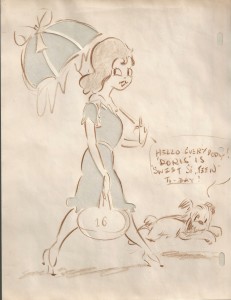






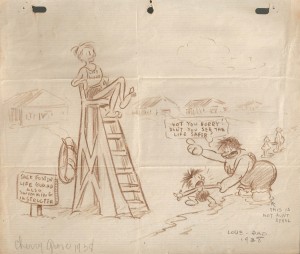

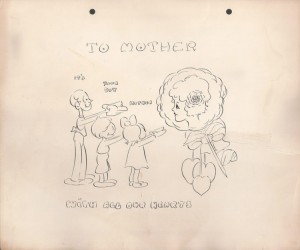

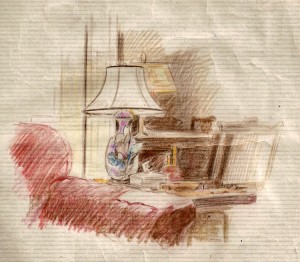
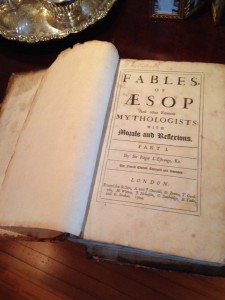


 Charlie Judkins is an animator and animation historian based in Brooklyn, NY. He also works as a Ragtime Pianist, and is the protege of Ragtime legend Terry Waldo.
Charlie Judkins is an animator and animation historian based in Brooklyn, NY. He also works as a Ragtime Pianist, and is the protege of Ragtime legend Terry Waldo.





































This is great! I’d like to think Foster designed Van Beuren’s Tom and Jerry, based on those family sketches.
My Great-Uncle John Foster was a devoted father, sending his children these weekly cartoon letters from the studio in New York to their house out on Fire Island. That must have been such fun mail to receive!
Foster was succeeded by Tom Morrison as Terry’s story editor in 1950, and retired.
It’s so pleasing to hear that an in depth history (and, perhaps, critical analysis) concentrating on the East Coast studios will eventually be going to press. What most people know or think about them today can almost be boiled down to a half dozen statements (egs. Betty Boop sucked after the Code was enforced; Terrytoons were poorly drawn and repetitive).
It’s a daunting task. There’s the whole silent era to decipher as studios came and went, and then there was the rise of commercial animation studios after World War Two.
Wonderful post, Charlie! Seeing drawings by Foster is a huge treat, and just leaves me wanting to see more. So little artwork is left outside of the actual films at Terry and Van Beuren; As Yowp says, it has been easy in the past to dismiss both the films and the work that went into them. I especially love the painting from 1903…lovely.
Very kind thoughts about my great-Uncle’s works. Thank you, and of course we thank Charlie for doing such a great job of pulling these family pieces together for all to see.
Reading these posts about John Foster were enjoyable and very informative. Now I know who animated those scenes I’ve admired for so many years. Happy to read
a book about east coast animation studios is in the process. It’s about time they get the recognition they deserve.
Oh, I really like your ragtime piano playing.
‘Pat’ Ventura
http://www.patcartoons.blogspot.com/
I’ve always been a fan of John Foster’s work, and seeing these drawings and paintings is a real treat.
Thank goodness for Charlie Judkins’ interest in my great Uncle’s work, because we are happy to share them through Charlie’s wise and sensitive interpretation. I am glad you have enjoyed seeing them.
This is a heart warming and informative article, Charlie. Thank you so very much for taking the time to come out to our family home in Bedminster and see first hand my Great-Uncle’s private works and family heirlooms. It is an honor to have this personal side of John Foster revealed to the animation community. It is also apparent that you are highly passionate and devoted to the history of animation, and we look forward to your upcoming book shedding a more in-depth light on the Early New York Animators. Great work, Charlie!
With sincere appreciation and gratitude, Ellen Vreeland.
ps…as many know, Charlie is an accomplished rag time pianist. He played for me at my home, sitting on the piano bench that belonged to none-other than The Foster Family, with a special needlepoint cover made by Ethel Ashton dated 1943. I mention Aunt Ethel because she is highlighted in one of Uncle John’s funny cartoon-letters to his children Doris and Jack.